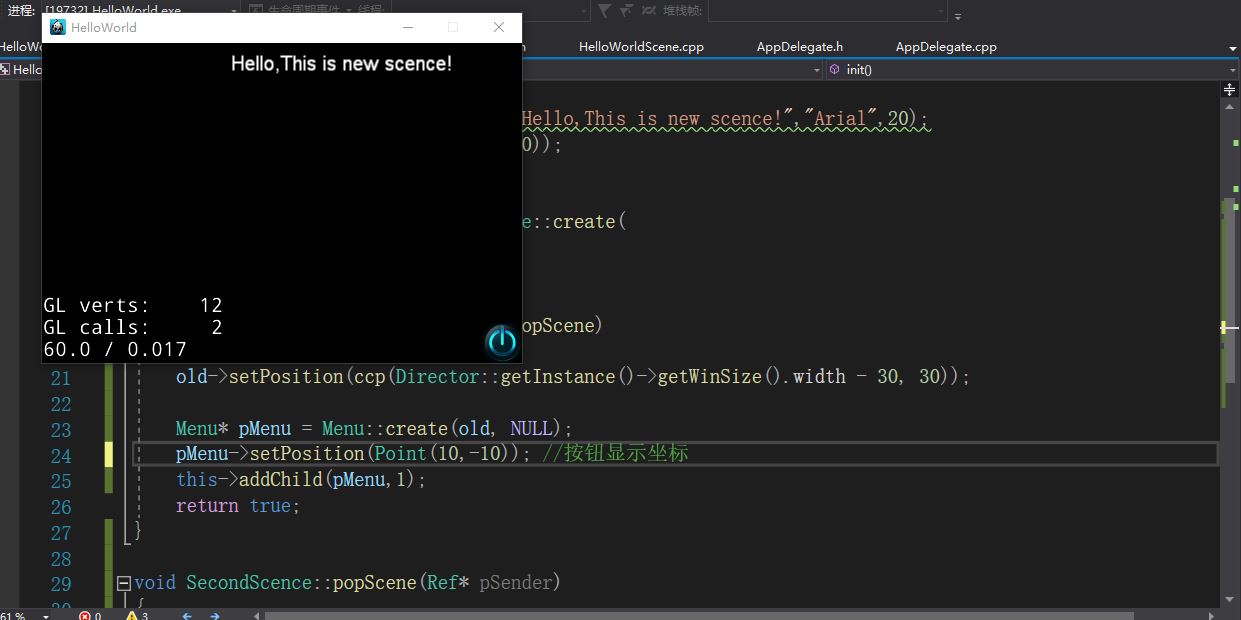
Using a lambda as a MenuItem callback: auto closeItem = MenuItemImage::create( "CloseNormal.png", "CloseSelected. Lambdas are also evaluated at runtime instead of compile time.Ī simple lambda: // create a simple Hello World lambda auto func = ()

Them! A lambda function is a function you write inline in your source code.
#Ccmenu add child cocos2dx full
If you run the sample code for this chapter you will see a Menu containingĪbove we just learned that when you click a menu item it triggers a callback.Ĭ++11 offers lambda functions and therefore Cocos2d-x takes full advantage of * repeat for as many menu items as needed */ auto menu = Menu::createWithArray(MenuItems) creating a menu with a single item // create a menu item by specifying images auto closeItem = MenuItemImage::create( "CloseNormal.png", "CloseSelected.png",ĬC_CALLBACK_1(HelloWorld::menuCloseCallback, this)) Īuto menu = Menu::create(closeItem, NULL) Ī menu can also be created by using a vector of MenuItem objects: // creating a Menu from a Vector of itemsĪuto closeItem = MenuItemImage::create( "CloseNormal.png", "CloseSelected.png", Add that CCMenuItem to a CCMenu, and then add the menu as child of the layer: CCMenuItem itemTSCCLayer. Menu can have just a single item or many items. You don't have to add a menu item to it, but a menu. You tap/click the menu item and it runs the code you specified. On the menu item a callback is triggered. Have two possible states, a normal and a selected state. Cocos2d-x offers a variety of ways to create your menu items includingīy using a Label object or specifying an image to display.


Menu object as a place holder for your menu items: auto myMenu = Menu::create() Īs we described options above of Play, Quit, Settings andĪbout, these are your menu items. Menus often contain buttons like Play, Quit, Settings andĪbout, but could also contain other Menu objects for a nested menu system.Ī Menu object is a special type of Node object. In your game you would probably use a Menu object to navigate through The two-stage theory states that the process of recall begins with a search and retrieval process, and then a decision or recognition process where the correct information is chosen from what has been retrieved.We are all probably familiar with what a menu is. In this theory, recognition only involves the latter of these two stages, or processes, and this is thought to account for the superiority of the recognition process over recall. Recognition only involves one process in which error or failure may occur, while recall involves two.
#Ccmenu add child cocos2dx free
Īnother two stage theory holds that free recall of a list of items begins with the content in working memory and then moves to an associative search Encoding specificity However, recall has been found to be superior to recognition in some cases, such as a failure to recognize words that can later be recalled.

The theory of encoding specificity finds similarities between the process of recognition and that of recall. The encoding specificity principle states that memory utilizes information from the memory trace, or the situation in which it was learned, and from the environment in which it is retrieved. In other words, memory is improved when information available at encoding is also available at retrieval. Encoding specificity helps to take into account context cues because of its focus on the retrieval environment, and it also accounts for the fact recognition may not always be superior to recall.įor example, if one is to learn about a topic and study it in a specific location, but take their exam in a different setting, they would not have had as much of a successful memory recall as if they were in the location that they learned and studied the topic in. Philosophical questions regarding how people acquire knowledge about their world spurred the study of memory and learning. Recall is a major part of the study of memory and often comes into play in all research. For this reason, the main studies on memory in general will also provide a history to the study of recall. In 1885, Hermann Ebbinghaus created nonsense syllables, combinations of letters that do not follow grammatical rules and have no meaning, to test his own memory. He would memorize a list of nonsense syllables and then test his recall of that list over varying time periods.


 0 kommentar(er)
0 kommentar(er)
